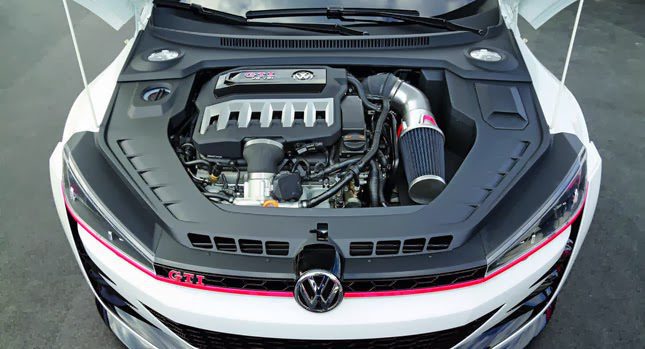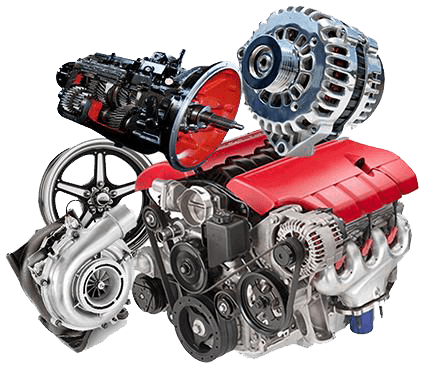Import Engines: Tips for Installation and Maintenance
Import Engines: Tips for Installation and Maintenance
Blog Article
Checking Out the current Technical Innovations in Import Engines and How They Enhance Driving Experience
In the realm of automobile engineering, the landscape of import engines is undergoing a profound makeover driven by cutting-edge technical advancements. From the development of turbocharged engines to the assimilation of crossbreed innovation, the most recent improvements are reinventing the driving experience in methods previously unthinkable. As import makers push the limits of performance and performance via improved fuel injection systems and sophisticated engine administration options, the question occurs: How do these advancements truly influence the method we connect with our lorries on the roadway?

Development of Turbocharged Engines
In the automobile industry, the advancement of turbocharged engines has actually considerably changed the landscape of performance and performance. Turbocharging, when mainly seen in high-performance cars, has currently come to be a mainstream innovation adopted by a large range of automobiles, from compact hatchbacks to deluxe cars. The fundamental concept behind a turbocharged engine is basic yet effective - by compeling even more air into the burning chamber, it allows even more fuel to be melted, leading to enhanced power result.
One of the key benefits of turbocharged engines is their ability to supply more power from smaller sized, more fuel-efficient engines. This scaling down trend has actually resulted in a decrease in emissions without endangering performance, making turbocharging an eye-catching choice for automakers aiming to meet rigid environmental guidelines. Additionally, turbocharged engines supply enhanced torque at reduced RPMs, providing motorists with a more responsive and vibrant driving experience - import engines.
As innovation continues to advancement, we can anticipate further advancements in turbocharging, leading to even higher degrees of efficiency and efficiency in the vehicle sector.
Advancements in Fuel Injection Solutions
Modern fuel shot systems have actually advanced to supply gas much more successfully and precisely into the engine cylinders, improving overall engine efficiency and fuel efficiency. One of the key innovations in gas shot systems is the shift from conventional port fuel injection (PFI) to even more innovative straight fuel shot (DFI) modern technology.
Additionally, the assimilation of electronic control systems (ECUs) and sensing units in fuel shot systems has actually allowed for real-time modifications to sustain distribution based on different elements such as engine tons, temperature, and driving conditions. In addition, improvements in fuel injector style, materials, and spray patterns have actually contributed to cleaner burning and smoother engine procedure.
Assimilation of Crossbreed Modern Technology
The advancement of fuel shot systems towards greater effectiveness and efficiency has established the stage for the smooth assimilation of crossbreed modern technology into contemporary engines. Crossbreed modern technology combines making use of standard inner burning engines with electrical propulsion systems, offering improved fuel efficiency and decreased exhausts. By incorporating electrical motors and batteries right into the powertrain, crossbreed engines can supplement the inner burning engine throughout velocity or low-speed driving, therefore enhancing overall efficiency.

Enhanced Engine Management Systems
What are the crucial improvements in engine administration systems that are enhancing the efficiency and effectiveness of modern engines? Engine monitoring systems have actually undergone substantial improvements to enhance engine performance and effectiveness.
Additionally, modern engine administration systems utilize innovative algorithms and artificial knowledge to evaluate the information gathered by sensors and make vibrant adjustments to variables such as ignition timing, fuel shot, and turbocharger boost pressure. This level of accuracy and versatility outcomes in boosted engine responsiveness, enhanced power result, and decreased gas usage.
In addition, engine see it here administration systems currently feature sophisticated analysis capabilities that can find and deal with concerns such as misfires, sensor malfunctions, and gas system irregularities in real-time, consequently enhancing general engine integrity and longevity. These improvements in engine monitoring systems play a vital function in enhancing the driving experience by providing optimum efficiency, fuel effectiveness, and integrity.
Impact of Lightweight Materials
Integrating light-weight products in engine manufacturing has reinvented the auto industry's method to improving gas performance and performance. The use of products such as carbon fiber, titanium, and light weight aluminum has dramatically lowered the total weight of engines, resulting in enhanced power-to-weight ratios and boosted gas economic situation. These light-weight products offer a higher strength-to-weight ratio compared to traditional materials like steel, permitting greater longevity without jeopardizing efficiency.
One of the essential benefits of utilizing lightweight products in engine construction is the reduction of inertia, leading to quicker engine feedback times and boosted overall car dexterity. Home Page Additionally, the lighter weight contributes to reduce power intake, making lorries a lot more environmentally friendly find more information by reducing emissions.
Moreover, the execution of light-weight materials in engine elements such as pistons, connecting poles, and crankshafts has made it possible for engineers to push the boundaries of efficiency without giving up dependability (import engines). This advancement has led the way for a lot more powerful and reliable engines that provide a remarkable driving experience while meeting stringent exhausts requirements
Conclusion
Finally, the most recent technological innovations in import engines have actually considerably boosted the driving experience. From the development of turbocharged engines to developments in gas shot systems, assimilation of hybrid technology, improved engine management systems, and using lightweight products, these innovations have actually collectively enhanced performance, fuel performance, and general driving characteristics. As modern technology remains to advance, we can expect much more amazing developments in the future of import engines.
Modern gas injection systems have advanced to deliver gas more effectively and specifically into the engine cyndrical tubes, improving general engine efficiency and fuel effectiveness - import engines. By incorporating electric motors and batteries into the powertrain, crossbreed engines can supplement the inner combustion engine during velocity or low-speed driving, thereby improving general efficiency
What are the key improvements in engine monitoring systems that are enhancing the performance and effectiveness of modern-day engines? Engine monitoring systems have undergone considerable innovations to optimize engine performance and efficiency. From the development of turbocharged engines to improvements in gas shot systems, assimilation of crossbreed technology, enhanced engine administration systems, and the use of lightweight materials, these advancements have actually jointly boosted efficiency, gas performance, and total driving characteristics.
Report this page